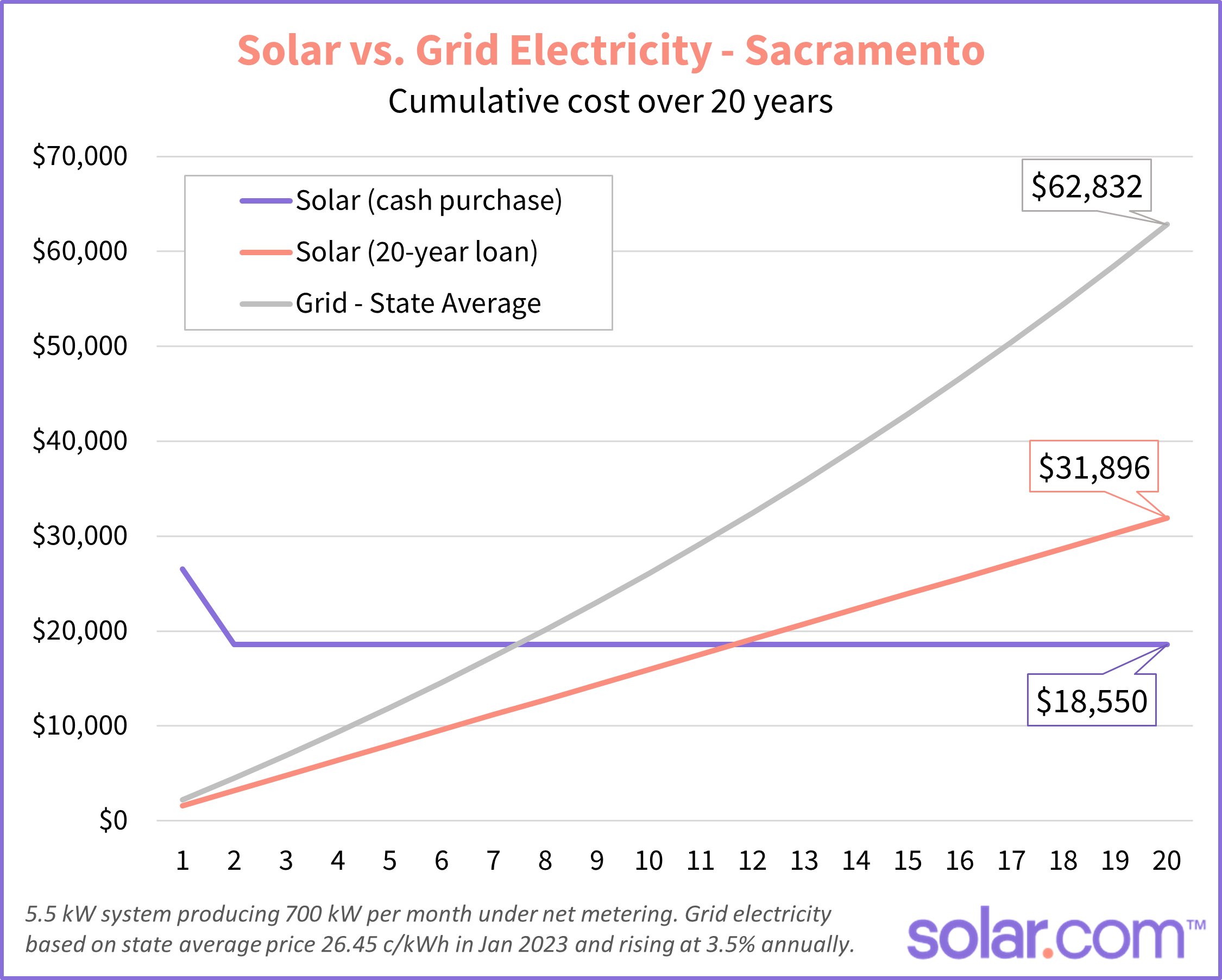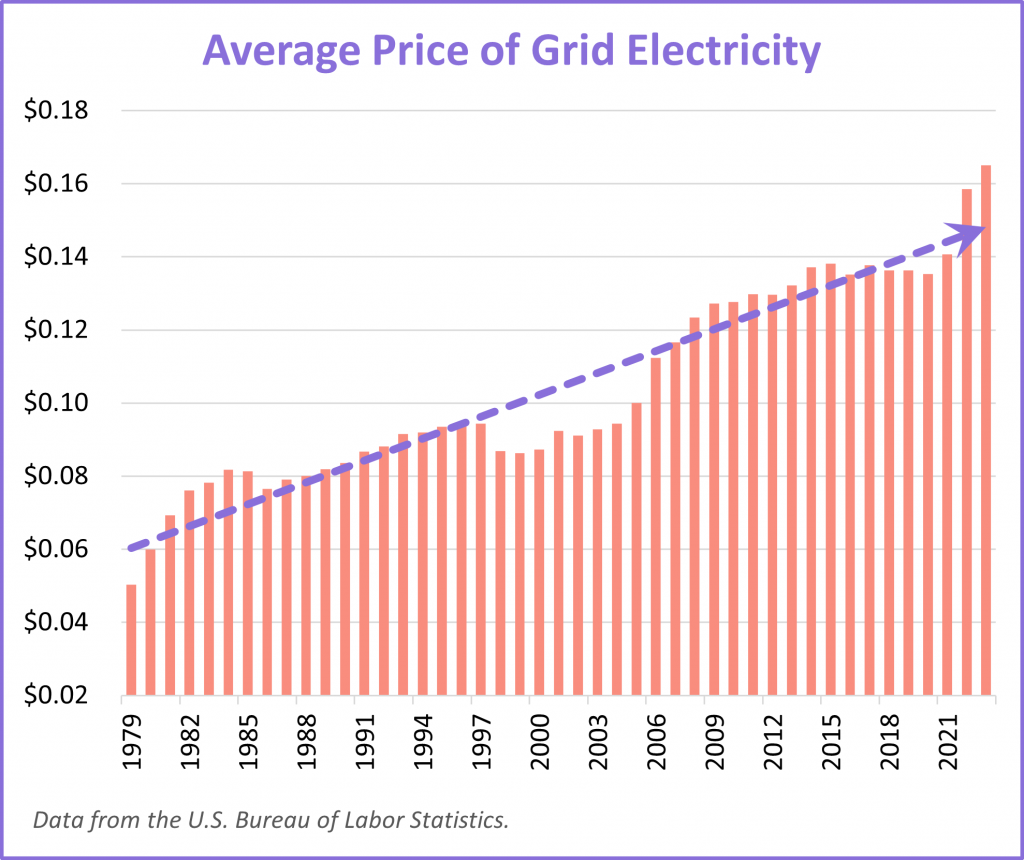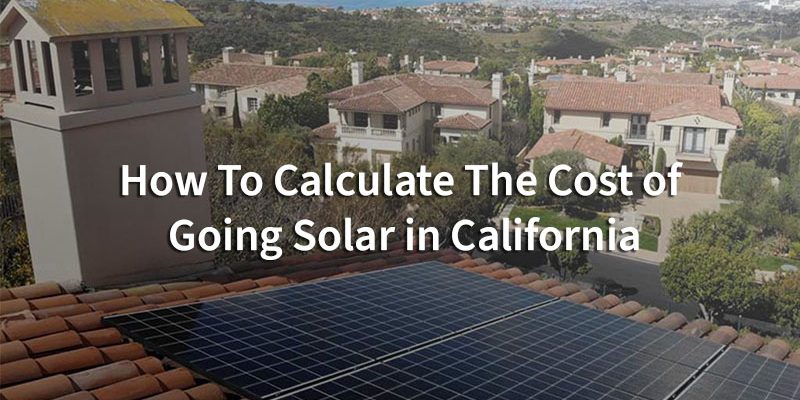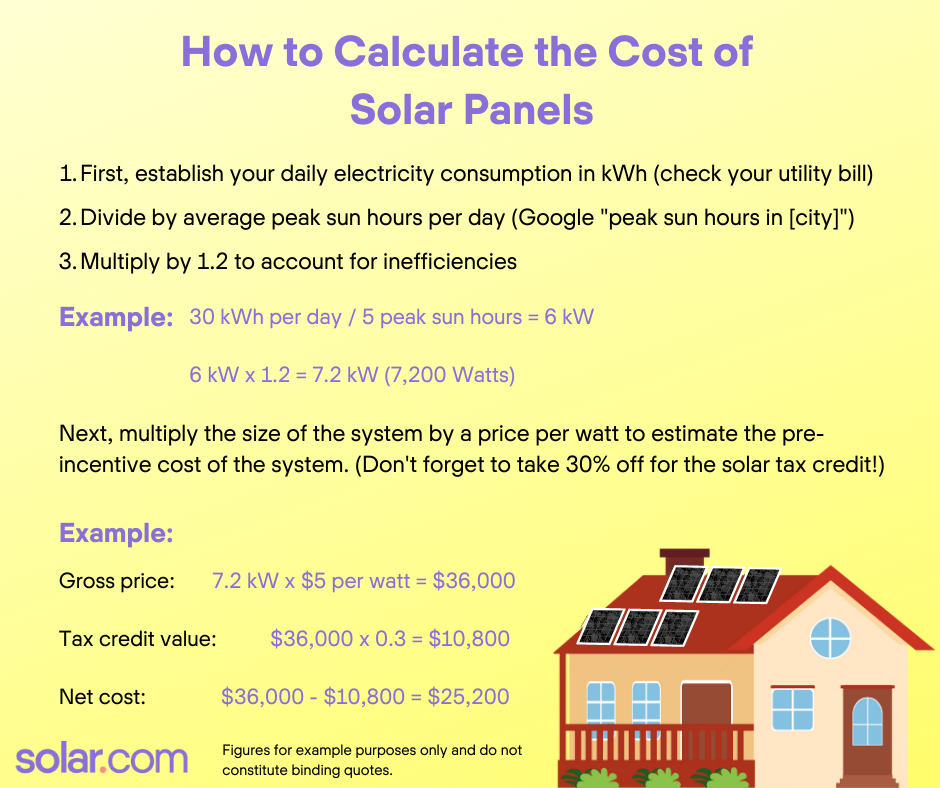
With the dramatic energy inflation of 2022, many homeowners are looking for ways to lower their energy costs and protect themselves from future rate hikes.
Solar panels cost less than buying electricity from a utility provider, and give homeowners unprecedented control over their essential electricity costs.
In this article, we’ll explore how people save money with solar panels and what makes home solar worthwhile. (Spoiler: It’s not all about the Benjamins!)
Is solar worth it financially?
Purchasing a solar system from a reputable installer is a sound investment for many homeowners, especially those with higher-than-average utility electricity rates, as it allows them to reduce their essential electricity costs.
One way to look at home solar is as a hedge against energy inflation. Home solar allows you to lock-in a fixed, lower cost for electricity while utility rates continue to increase over time – sort of like buying a house to protect yourself from rent inflation.
There are three things that make solar a safe and steady investment:
- Solar panels are typically warrantied for 25-30 years (even though they last much longer)
- Solar panels increase your home value
- The price of grid electricity rises steadily over time
By going solar, you’re essentially betting on utility rates continuing to rise. Based on the last 40 years, that’s a pretty safe bet.
How much money do you save a month with solar panels?
Your monthly solar savings depend on your utility rate, electricity consumption, and how you finance your solar system. But let’s run through an example to get a rough idea.
Let’s say you live in Sacramento, California and use 700 kWh of electricity per month. How much would solar lower your monthly electricity costs?
The average price of electricity in California was 26.45 cents per kilowatt hour in January 2023. Meanwhile, the solar cost per kWh in California is typically 7-9 cents, depending on the size of the system, sun exposure, and available incentives.
In this scenario, let’s say you bought a 5.6 kWh solar system for $18,550 (after claiming the solar tax credit). That size system can be expected to produce around 210,000 kWh of electricity over 25 years, for a levelized cost of 8.8 cents per kWh.
Based on these figures, here’s a look at an average monthly electric bill in California with solar panels and without solar panels.
| Electricity source | LCOE | Avg monthly consumption | Avg monthly cost |
| Grid (CA state average) | 26.45 cents/kWh | 700 kWh | $185 |
| Solar (cash purchase) | 8.8 cents/kWh | 700 kWh | $62 |
| Solar (20-year loan) | 15 cents/kWh | 700 kWh | $133* |
Based on a 5.6 kW system with net cost of $18,550 after claiming the federal solar tax credit. *Monthly payment on a 20-year solar with 6% APR.
It’s important to note that solar savings increase and accelerate over time as utility rates increase. The chart below shows the cost of solar versus grid electricity over 20 years of 3.5% utility rate hikes.

As you can see:
- Paying cash for solar provides the greatest long-term savings, but it takes 6-10 years to recoup the upfront cost
- Taking out a solar loan can provide Day 1 savings, but interest eats into the long-term savings
The beauty of solar is that you have control over how you buy electricity, which is something you can’t get from a utility provider.
Are solar panels worth your money?
While solar panels are a great way to lower your energy costs, the question of when they become “worth it” really depends on your energy goals.
Do you really save money on solar panels? Yes, most homeowners can save money with solar panels. But exactly how much and when you save money depends largely on your utility rate and how you purchase the system.
It’s also worth noting that savings isn’t the only reason to buy solar panels – or even the primary motivation for many homeowners. Some folks find the environmental benefits, increased home value, and energy independence worthwhile, even if their savings aren’t astronomical.
The great thing is that you don’t have pick a single reason. Often what makes solar worth it is a combination of environmental and economic reasons. (And let’s admit it, the ego boost of being a clean-energy badass doesn’t hurt either)
The important thing to remember is that your solar panel cost is an investment in lowering your energy costs – not a get rich quick scheme.
The bottom line
Following the sharp rise in electricity prices in 2022, solar panels offer homeowners a way to reduce their essential electricity costs and hedge against further energy inflation.
Exactly how much money you save with solar – and when you save it – depends on many things, especially how you purchase your system. And exactly when solar becomes worthwhile depends on your motives and energy goals.
The key to a successful solar installation is setting realistic expectations and working with a reputable installer with good standing in your community.
Connect with an Energy Advisor to discuss your energy goals and design a custom solar system.




